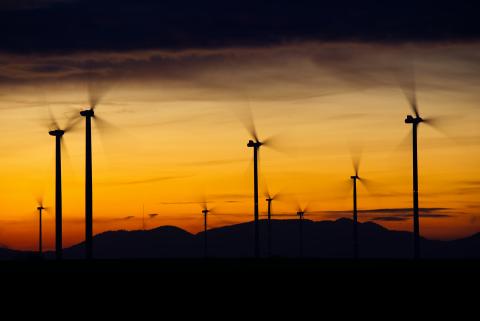A superpower taking its energy policy global
The story of China’s overseas renewables investment, reaching well beyond its formal Belt and Road Initiative, remains largely untold.
As private and stated-owned Chinese companies move aggressively to capitalize on fast-growing renewable energy markets, China’s investment in foreign wind-powered electricity markets has recently surpassed $12 billion in Europe and Australia alone, as shown in a research brief we published this week.
Most of this wind investment activity has been in Europe, in following with recent trends. Chinese state-owned independent power producers have acquired big wind projects in nine European countries, aiming to diversify their foreign portfolios and gain expertise in offshore wind technology.
Some of the top Chinese state-owned power companies, including State Development and Investment Corp (SDIC) and China Resource Power, are buying interests in wind projects off the eastern coasts of England and Scotland, reflecting a wider trend toward Chinese investment in the U.K. energy sector especially.
China is now a driver of the European energy transformation. China’s international leadership in the low emissions sectors of the future aligns with the country’s efforts to increase its global economic influence.
While Chinese foreign renewable energy investments were boosted by the launch five years ago of its Belt and Road Initiative (BRI), its foreign renewable energy investment now extends well beyond that framework.
IEEFA has previously shown how China’s investment in new energy technology and resources totaled $44 billion in 2017, up from $32 billion in 2016, with substantial holdings in Europe and South America. This is a superpower taking its energy policy global.
THERE IS A FLIPSIDE TO THIS STORY, INVOLVING A MISSTEP BY CHINA in continuing to invest in coal-fired power production overseas even as its domestic coal sector declines and heavy investments in renewables are made at home. While China is establishing itself as a renewable energy leader in richer nations, it is still pushing its outdated coal technology in the developing nations of Asia and Africa.
Outdated forms of electricity generation are an increasingly risky bet.
It’s clear that renewables will be the dominant global energy technology in the years ahead, a fact that has serious implications for the coal-fired electricity generation industry everywhere and one that makes it an increasingly risky bet.
From 2003 to 2017, China’s power investments in Southeast Asia included $12 billion in coal projects, despite the abundance of solar and wind power investment potential in those markets. Wind and solar investment have increased worldwide within the past few years as costs have plummeted.
China Huadian Corp. was the biggest Chinese international coal investor, with a total of $11.2 billion of holdings in that sector from 2003 to 2017, followed by Shenhua Group ($4.6 billion) and China Huaneng Group ($3.2 billion).
Huadian plans to build a 1,320 MW coal-fired power plant in Bangladesh (a signatory to the BRI). PowerChina also has a Bangladesh coal project and is contracted to construct the controversial Lamu project in Kenya, of which Huadian is a member of the proponent consortium.
Pakistan, a key BRI country, is hosting substantial Chinese involvement in infrastructure investment, including in coal-fired power. Companies like China Huaneng Group and China Machinery Engineering Corp. (CMEC) are heavily involved in Pakistani coal projects. Shanghai Electric and Dongfang Electric are part of a consortium that has recently been awarded a contract to build the 6,000 MW Hamrawein coal power project in Egypt, a BRI crossroads between Asia, Africa and Europe.
Meanwhile, other global investors, including the $73 billion Japanese company SoftBank are shaking up the energy world. In the past 12 months alone, SoftBank has announced plans to invest $60 to $100 billion in Indian solar and $200 billion in Saudi Arabian solar.
Competitiveness for new, clean energy technology is only increasing as market-moving climate risks are unfold in real time. Coal plant stranding will likely happen faster than expected as more and more steel is put into the ground for solar and wind plants.
China is setting itself at the forefront of renewable technology, but how fast will move, how far will it go, and who will follow?
Simon Nicholas is an IEEFA energy finance analyst. A version of this column appeared this week on the website of the Thompson Reuters Foundation.
RELATED ITEMS:
IEEFA update: China moves heavily into foreign wind markets
IEEFA report: Marubeni’s coal commitments are creating ‘needless reputational and financial risk’











